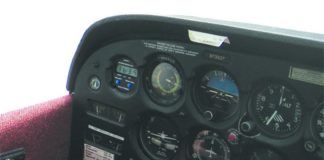In Romeo and Juliet, Shakespeare asked what’s in a name. In aviation, it’s a complicated question since we geek out on acronyms and technical jargon. Instrument currency regulations reference a couple different terms; none of them are a rose, but some are pretty sweet.
Simulator (FS)
A simulator is a full-scale replica of a specific aircraft that exists in a virtual world. A visual system, realistic control feedback, and motion combine to trick the mind. Four levels exist, A through D, with D being the highest and including features like windshear and blown tire replication. A complicated and ongoing evaluation process ensures each simulator’s performance matches that of a real airplane. The data packages used to mimic the real plane can cost over a million dollars.
Flight Training Device (FTD)
An FTD is also a full size replica of a specific aircraft and must be individually approved and evaluated by the Feds. Unlike a FS, FTDs do not need to have motion or visuals. These are poor man’s simulators. Most regulations use FS or FTDs interchangeably.
Aviation training device (ATD)
ATDs are the revamped term for PCATDs and lower level FTDs. ATDs have physical flight and systems controls like an FTD but do not require accurately replicating control loads. Additionally, FAA approvals are often done at the manufacturer level instead of at each individual installation.
The FAA identified two uses for ATDs, procedure and performance training. Learning how to enter a hold is an example of procedure training, while simply entering the hold is performance training. Two categories of ATDs exist.
Basic Aviation Training Device (BATD)—Our friends in DC found these devices adequate for procedure training. As a result only 10 hours can be used towards an instrument rating. A BATD must be accompanied by a list of required components, letter of approval from the FAA, and a qualification and approval guide (QAG).
Advanced Aviation Training Device (AATD)—AATDs can be used for both procedure and performance training. Twenty hours of training can be used towards an instrument rating. Even all but the landing requirement for an instrument practical test or an IPC can be accomplished in one of these. An AATD must meet the design requirements of a BATD plus have a realistic shroud, instrument panel, and life size buttons and instruments. —JM




